Botanic Garden
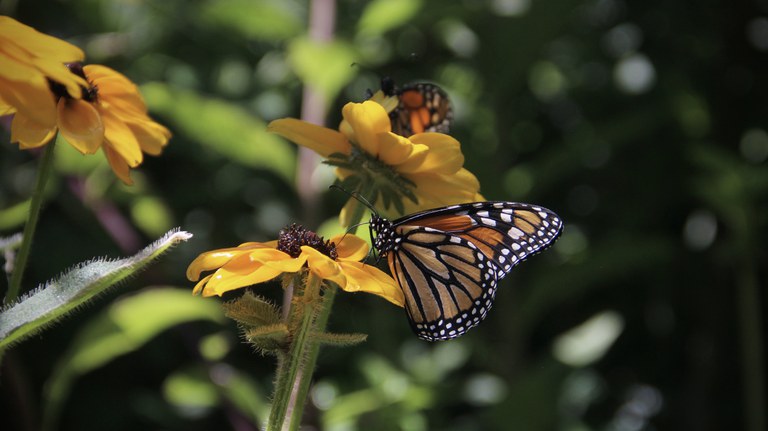
Opened in 1996, the Botanic Garden has grown to 32 acres of exhibits, and showcases plants from the American Southwest and around the world.
The Botanic Garden’s BUGarium is one of the most elaborate exhibits dedicated to bugs and arthropods in the country.
The Travel Channel cites ABQ BioPark Botanic Garden as one of the top 12 in the country!
Seasonal Update:
Learn more about featured seasonal plants!
Featured on 5/15/24: The High Desert Rose Garden is officially in bloom! The smell of roses draws you in even before you reach the breezeway, and there's a variety of colors and other flowers on display.
Roses are arguably one of the most famous flowers on Earth. The genus Rosa has over three hundred species and tens of thousands of hybrids or cultivars, something humans have been working on for around 5,000 years! There are three main categories that a species or cultivar will fall into: Old Garden Roses, Wild Roses and Modern Roses. Modern roses are among the most commonly seen, and they were developed to have larger blooms continuously; Old Garden varieties predate 1950. In addition to a rainbow of colors, there are also variations in growth habits including erect shrubs, climbing, or trailing.
In general, roses do best in sunny locations where they are sheltered from strong winds. They thrive best in well-drained, fertile loam soils. Research the best pH for your chosen cultivar, as some roses have adapted to tolerate soil ranging from moderately acidic to moderately alkaline. Though ramblers and other species aren’t responsive to heavy pruning and it can damage the rose, hybrid climbing roses can be pruned to develop new, vigorous canes and to adjust their size to the trellis, pergola, fence, or place where they are being grown. Climbing cultivar Rosa 'Devoniensis', pictured, is a repeat bloomer from spring until autumn.
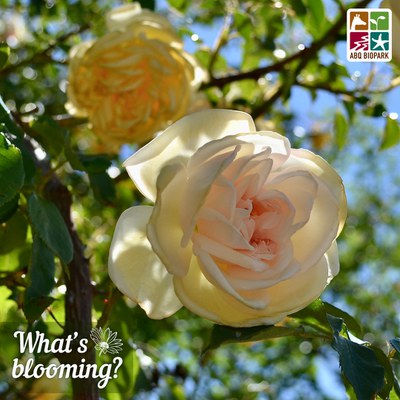
Featured on 5/8/24: Meet the English hawthorn, Crataegus laevigata. Hawthorn trees are typically smaller-sized flowering trees which have red berries in the fall and are perfect for attracting and hosting year-round wildlife in the garden. The genus Crataegus includes several hundred species of shrubs and trees which are native to temperate regions of the Northern Hemisphere in Europe, Asia, North Africa and North America. The leaves and berries are medicinal and strengthen the heart. The various species, cultivars, and hybrids offer a variety of flower colors. Some, like the 'Crimson Cloud' inside the Botanic Garden's gate, are actually thornless! 'Paul’s Scarlet' hawthorn has a brilliant pink double flower with a white eye. Other species, like Russian hawthorn, feature green bark and white flowers, and the popular cultivar 'Winter King' showcases brilliant fall color.
Many species and hybrids are used as ornamental and street trees, or hedge plants; they can make excellent bonsai trees, too! Hawthorn need a minimum of 6 hours of sunlight per day; full sun is better, but they can tolerate partial shade. They are not too fussy on soil types, although they need enough drainage to not be waterlogged, and can handle slightly alkaline to acidic pH. Give them room to thrive (and watch out for those thorns too close to walkways!) and overall, hawthorns are an excellent drought tolerant selection for arid climates and small garden spaces.
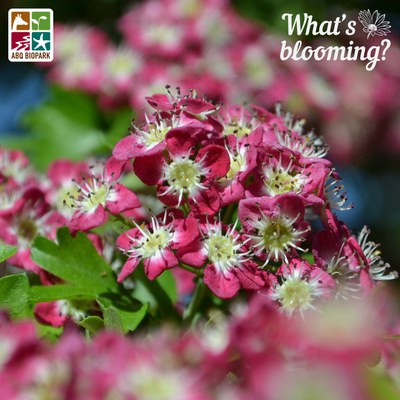
Featured on 5/1/24: Chinese wisteria, or Wisteria sinensis: If you were to walk under a canopy of Chinese wisteria clusters, your first thought likely wouldn't be of beans! But the genus Wisteria is indeed a part of Fabaceae or Leguminosae, commonly known as the legume or bean family. The four species of wisterias climb by twining their stems around any available support, even as high as 66 ft above the ground and spread out 33 ft laterally. The largest on record is more than 1 acre in size and weighs 250 tons! It lives in Sierra Madre, California and was planted in 1894.
Chinese wisteria does need a strong support structure, like steel, to climb. American wisteria (Wisteria frutescens) is a vigorous, but less-aggressive, grower. While still requiring a strong support, American wisteria tends to behave better in smaller garden settings. The Botanic Garden collections feature Chinese, Japanese, and American Wisterias; each are unique and have slightly different bloom times and flower density. If you are short on space, don't fret: all wisteria can be displayed as a small weeping tree with regular training and pruning, and will do well grown on an obelisk in a large container. Chinese wisteria is very hardy and fast-growing. It can grow in fairly poor-quality soils but prefers fertile, moist, well-drained soil. It thrives best in full sun for 6-8 hours; shade or partial sun will reduce flowering. They say good things come to those who wait: although vines *may* produce flowers by the second or third year after planting, it may take much longer (sometimes up to 15 years). Plants grown from seed may take up to 20 years to flower, but that's nothing when it can live for up to 100 years! It can also be propagated via hardwood cutting or softwood cuttings to reduce the wait time until maturity. Regular pruning(s) will help control size and shape of the plant, and encourage flowering. One last consideration: all parts of the plant contain some harmful compounds, such as Wisterin and lectin, which can cause problems when ingested. It's best to keep all parts of the plant away from pets and children, so make sure you can start it in a safe spot!
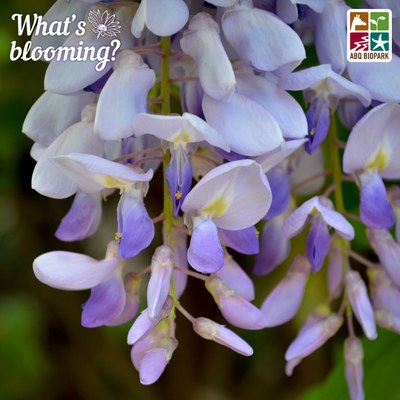
Featured on 4/17/24: Pictured here is the cultivar Viola 'Mulberry Shades', found in the containers in the Curandera Garden for Spring. Did you know that all pansies are violas, but not all violas are pansies? Though many use the names interchangeably, you can tell the difference by looking at the petal arrangement: a pansy has four petals pointing upward and only one pointing downward; whereas a viola flower has two petals pointing upward and three petals pointing downward. The genus Viola is the largest of the family Violaceae with over 680 species, most of which are found in the temperate Northern Hemisphere but there are some found in Hawaii, Australasia, and the Andes.
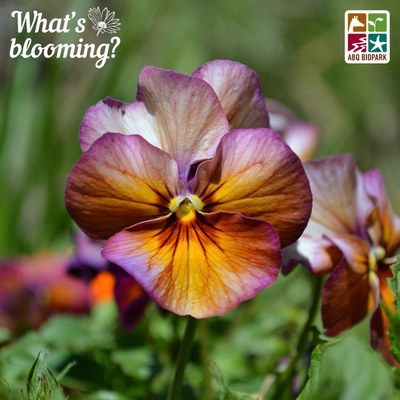
No results were found.
